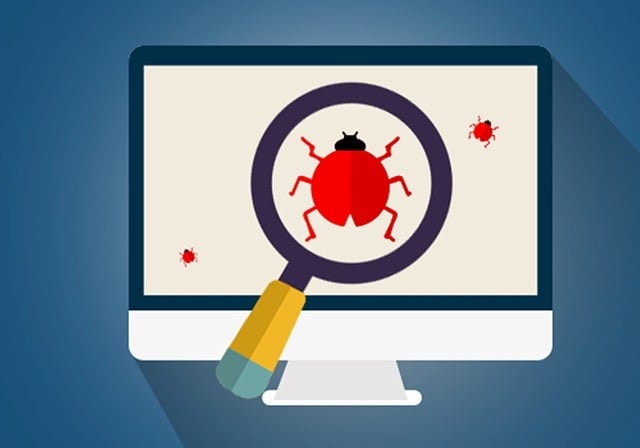What is Penetration Testing and Why It Matters

According to the National Institute of Standards and Technology, penetration testing is “a method of testing where testers target individual binary components or the application as a whole to determine whether intra or intercomponent vulnerabilities can be exploited to compromise the application, its data, or its environment resources.”
In less confusing words, penetration testing, oftentimes known as pen testing, is when authorized hackers, or ethical hackers, attempt to expose vulnerabilities in a system via simulated cyberattacks. These exposed vulnerabilities are then reported back to the organization in order to fix any exposures and further protect the organization.
Why do penetration testing?

As we continue to move our lives and businesses more and more online, more valuable and sensitive information is also moved (whether that be in cloud storage, on-prem storage, etc.). The plethora of data, wherever the data may be stored, is like a treasure trove to nefarious actors who use cyberattacks more and more. Whether it be to hold sensitive data ransom or to exfiltrate and sell it elsewhere, data that companies hold is now a key target for exploitation.
Outside of simply knowing if and where vulnerabilities may lie in your organization, penetration testing supports regulatory compliance (think: what relationship does HIPAA and cloud compliance have?).
Regulatory standards that require pen testing:
Regulatory standards that pen testing can be used to prove compliance:
Penetration tests allows for your organization to expose, and then remediate, vulnerabilities, but pen testing also allows for your org to meet or work towards regulatory compliance standards.
What are the approaches and types of penetration testing?
Approaches:
- Black box testing
- In the black box approach, pen testers, or ethical hackers, have no information about the system – they only have information they’ve researched online and discovered. This approach most simulates hackers. The goal of a black box testing engagement is to provide an organization with what information is available on the internet that could potentially aid a threat actor in attempting to infiltrate them. It answers the question, “How exposed are we at our internet-facing perimeter?”
- White box testing
- In the white box approach, pen testers have all the information about the system – think architecture, code, logins, etc. The goal of a white box testing engagement is to provide an organization’s teams with a detailed account of their internal attack surface, whether that is internal infrastructure or an authenticated application. This could include network misconfigurations, overly provisioned access levels, and other threats that may be presented from within the environment. It answers the question, “Can our employees/users access resources they shouldn’t?”
- Gray box testing
- The gray box approach is a mixture of the black box and white box approach. The pen testers are provided some information, but not all. This then requires then to explore the known information more throughout the testing process. The goal of a gray box testing engagement is to understand the attack surface of specific scenarios. For example, there may be information regarding an organization that is soon to be public. Conducting a penetration test providing the tester with that information would give the organization insight towards any potentially new threats that may arise as a result.. It answers the question, “What threats do we face if we’re facing this specific situation?”
Types:
There are different types of pen testing including:
- Internal pen testing
- Internal pen testing assesses an organization’s internal systems for potential vulnerabilities. This type of testing simulates attacks from within the organization, often mimicking scenarios where a rogue employee or an external attacker with stolen credentials attempts to cause harm. Utilizing standard access privileges, a team that performs pen tests can pinpoint weaknesses that might permit lateral movement or privilege escalation within the organization.
- External pen testing
- External pen testing focuses on identifying exploitable vulnerabilities in any external-facing systems. This type of testing involves assessing publicly available information and such as internet-facing assets, websites and APIs. External pen testers may attempt to breach firewalls or crack passwords using both public and private data, as well as utilizing pen testing tools to aid in their assessments. This type of pen test is crucial for organizations with significant online presence, as it helps protect against external threats.
- Wireless pen testing
- Wireless pen testing assesses the security of wireless networks, identifying potential risks and vulnerabilities. This type of testing can uncover vulnerabilities that can be exploited by tools available in wireless hacking suites. Testers evaluate wireless networks to ensure they are safeguarded against potential hacking attempts. This type of testing is essential for organizations that rely heavily on wireless networks and mobile devices.
- Web application pen testing
- Web application pen testing evaluates the security of web applications, APIs, and software to identify potential vulnerabilities. Testers use various web application attacks, such as SQL injection and cross-site scripting, to exploit these vulnerabilities. The goal is to fortify web applications against unauthorized access attempts.
- Physical pen testing
- Physical pen testing evaluates physical security measures, such as access controls and surveillance systems, to identify weaknesses that could allow unauthorized access to critical systems and data. Testers may pose as delivery personnel or contractors to gain unauthorized access.
The penetration testing process

Reconnaissance
During the planning and reconnaissance phase, penetration testers gather information about the target system, including:
- Network configurations
- Website and subdomains
- Applications
- User accounts
This phase can involve both passive methods, which rely on publicly available data, and active methods, which involve direct interaction with the target system or computer system. This could also involve social engineering techniques.
Ethical hackers work closely with stakeholders to define the scope and objectives of the penetration test, ensuring it aligns with the organization’s risk management strategy and compliance requirements. This collaborative approach ensures that the ethical hacking process is tailored to the specific needs and vulnerabilities of the organization.
Scanning
The scanning phase involves using penetration testing tools to detect open ports, check network traffic, and identify potential vulnerabilities in the target system.
Scanning tools can include Web Data Extractor, Whois Lookup, Port Scanner and more. Tools like these can help in identifying open ports and used protocols.
Although scanning tools can detect potential threats, human involvement is often indispensable for a comprehensive risk level assessment and determining the optimal course of action. This phase is crucial for uncovering critical security vulnerabilities that could be exploited by attackers.
Vulnerability assessment
By gaining knowledge of the attack surface (from the last phase), in this phase pen testers will try to identify security weaknesses, or vulnerabilities, that could be exploited by attackers to gain unauthorized access into the target system.
In the phase where penetration testers attempt to gain access, they exploit identified vulnerabilities and bypass security measures. This can involve using tools like Metasploit to gain unauthorized access to the target system.
Exploitation
In this phase, pen testers will actually attempt to break into the system by exploiting any of the vulnerabilities found during the scanning and vulnerability assessment stages.
Once vulnerabilities are exploited, testers may escalate privileges, document the ability to steal data (it’s essential to note pen testers are seeing if stealing data is possible, but they are not actually stealing data), and/or intercept network traffic. This phase necessitates meticulous execution to prevent system damage while exhibiting the potential impact of vulnerabilities. It is also common to conduct these more rigorous penetration tactics against a simulated, non-production environment to ensure business operations remain unaffected.
Maintaining access involves using techniques to avoid detection while keeping control over the compromised system. The goal is to imitate advanced persistent threats (APTs) and demonstrate how attackers can maintain a foothold within the network.
Testers can showcase the potential long-term impact of a breach and help organizations understand the importance of robust security controls.
Reporting
The analysis and reporting phase involves:
- Documenting the findings from the penetration test
- Including uncovered vulnerabilities, their severity, and recommendations for remediation
- Providing a detailed account of the specific vulnerabilities exploited
- Identifying sensitive data accessed
- Determining the undetected presence duration
The report is a crucial component of the penetration test process as it provides valuable information for addressing security vulnerabilities and improving overall system security.
A comprehensive penetration testing report should include a business impact assessment and clear guidelines for addressing the identified vulnerabilities. This helps organizations prioritize remediation efforts and enhance their security posture.
Post penetration testing
After the penetration testing process, cleanup and remediation will occur. The key of post penetration testing from the testing organization’s perspective is to highlight that as the organization remediates, they should continue to work with the pen testers to retest and ensure remediations are successful and the same findings do not reappear. A window of time is typically negotiated between the pen testing company and the organization after the report is given where retesting occurs as part of the original engagement. It is important for organizations to take advantage of this time to prioritize their remediation efforts and have the pen testers retest. Efficient remediation is a critical benefit of penetration testing, enabling organizations to rectify security issues and bolster their defenses based on the test findings.
So what can this look like in terms of roles and responsibilities?
- Pen testers’ responsibility:
- Remove any artifacts left during the penetration test to ensure the system remains secure.
- If agreed upon prior, offer guidance on how to remediate.
- If agreed upon prior and within the agreed upon window, retest.
- Organization’s responsibility:
- Address the identified vulnerabilities through remediation.
- Implement measures to prevent future exploitation.
Sustaining efficient communication channels with pertinent stakeholders is crucial during the entire vulnerability management lifecycle. Continuous monitoring and regular audits help identify and address new vulnerabilities over time.
What should you look for in penetration testers?

Penetration testers, also known as ethical hackers, can work in-house, for security firms, or as freelancers. Many independent cybersecurity experts and businesses offer penetration testing services. These professionals are often highly skilled and possess advanced credentials and certifications.
Certifications like CEH (Certified Ethical Hacker), CompTIA PenTest+, and OSCP (Offensive Security Certified Professional) are valuable qualifications for penetration testers. The industry recognizes CREST and NCSC accreditations as credible standards for penetration testing firms. Highly regarded in the industry, these accreditations guarantee that testers possess the necessary skills and knowledge for comprehensive security assessments.
Conclusion
It can be difficult to find buy-in (both literally and figuratively) for a cybersecurity budget, not to mention paying people to essentially hack into your organization’s online presence. But, penetration testing is a critical element of an organization’s cybersecurity strategy, assisting in the proactive identification and resolution of vulnerabilities before cyber threats can exploit them. By simulating real-world attacks, organizations can gain valuable insights into their security gaps and take appropriate measures to strengthen their defenses.
If you need support with penetration testing, Cyber Defense Group can help. Investing in regular penetration testing is a proactive step towards ensuring the security of your digital assets and protecting your organization from potential cyber threats. Book a meeting today!
